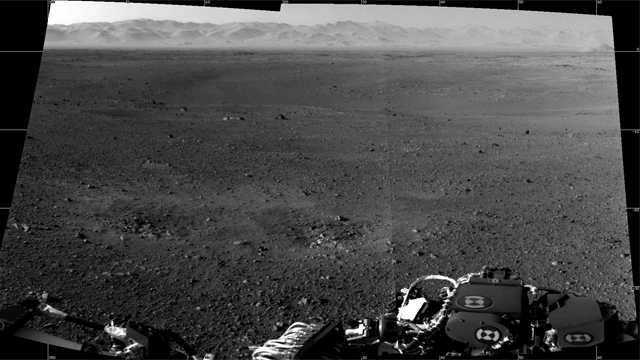
Last Sunday, NASA scored a long-distance touchdown (a very long distance, with the goal posts fully 150 million miles away) on Mars! The Mars Science Laboratory, nicknamed "Curiosity" by essay winner Clara Ma, is now the largest, most complex and science-capable lander ever to have set down on the Red Planet.
More on that later. Now, a bit of reminiscing on a similar event that happened 36 years ago--one that, to me, was in certain ways even more exciting. It was Viking 1, the first successful landing on Mars, which set down in Chryse Planitia on July 20, 1976 (seven years to the day from the first manned Moon landing).
I recall clearly standing on my knees in front of the television (in a room that, coincidentally, my parents had decorated in orange) waiting for the newscast to reveal the first-ever images from the surface of Mars. THAT was excitement. I had read so many sci-fi stories about Mars and had drooled over many artists concepts of what this other world might look like that waiting to see the first photograph from ground level was simply electrifying.
Upon seeing the image appear on the TV, my first reaction was, "Look! There's a rock!" I had expected to see rocks, but first laying eyes on actual Martian rocks, seeing their shapes, textures, and details, was like being the first person to step onto another world. When I saw little piles of sand next to some of those rocks, more of that until-then unrevealed world unfolded. The sky was bright, not dark as the airless skies of our familiar Moon are. In later pictures from both Viking landers, seeing Earth-style features like cirrus clouds in the sky and water frost on the ground was more icing on the cake.
Back to last Sunday. At Chabot, we were packed with people who had come to witness the landing of Curiosity on the big TV screens of our planetarium and theater domes. This landing was different from that of Viking 1, of course; we are now very familiar with the surface of Mars, not only as revealed by the cadre of landers and rovers—the Vikings, Pathfinder, Spirit, Opportunity, and Phoenix—but by the hi-resolution spy-cam (HiRISE) of the Mars Reconnaissance Orbiter. We'd seen landings before, and though each one was in a different location with different geography to gawk at, the common look and feel of Mars has long been a part of our experience.
